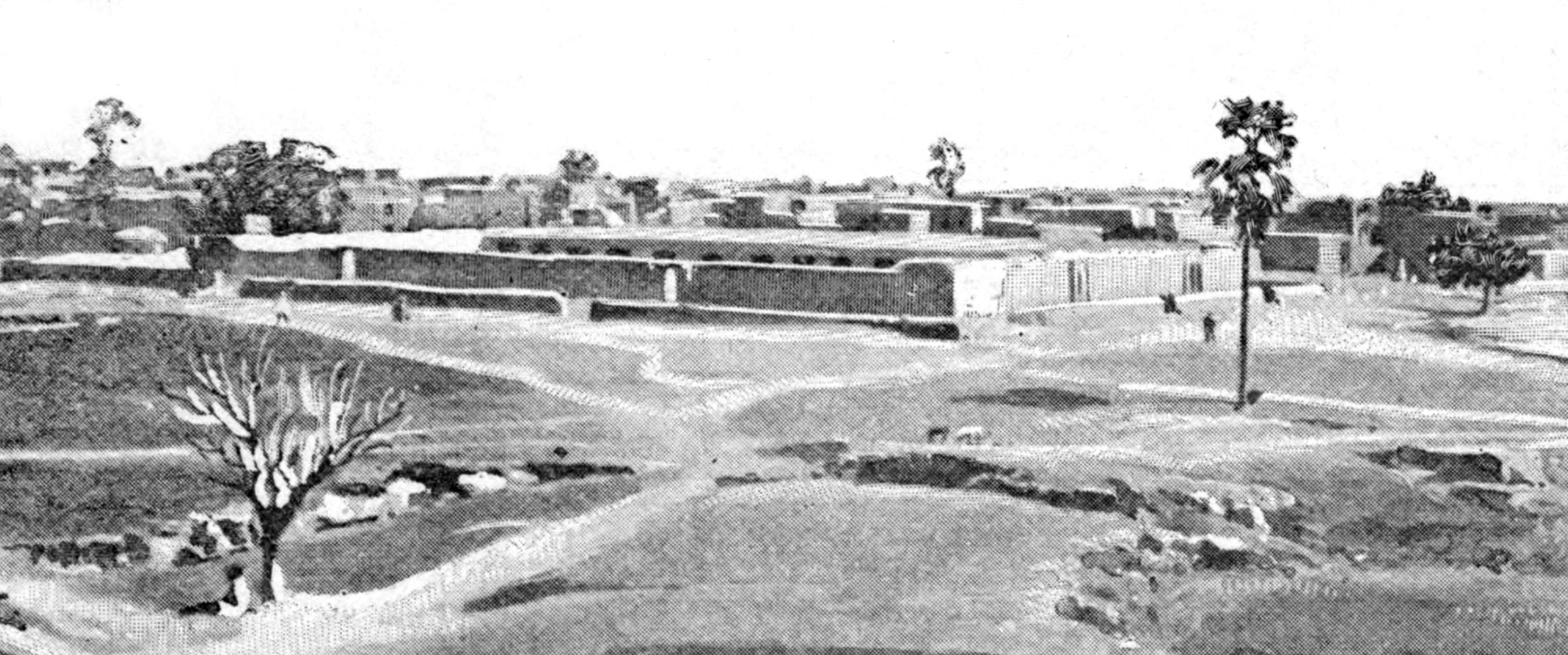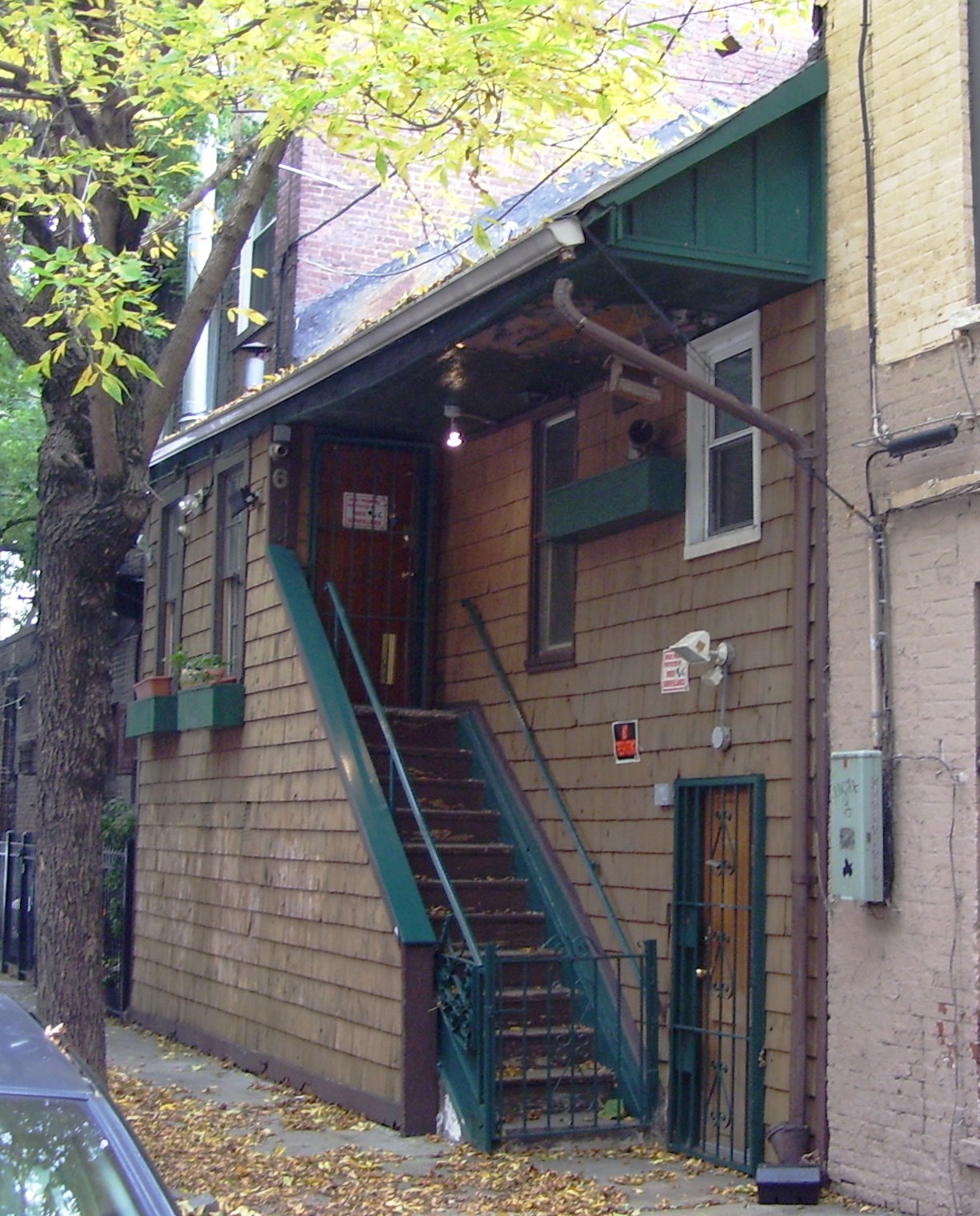|
Great Mosque Of Djenné
The Great Mosque of Djenné in the Sudano-Sahelian architecture, Sudano-Sahelian architectural style is the largest adobe brick building in the world. The mosque is located in the city of Djenné, Mali, on the flood plain of the Bani River. The first mosque on the site was built around the 13th century, but the current structure dates from 1907. As well as being the centre of the community of Djenné, it is one of the most famous landmarks in Africa. Along with the "Old Towns of Djenné", it was designated a World Heritage Site by United Nations Educational, Scientific and Cultural Organization, UNESCO in 1988. History The First Mosque The actual date of construction of the first mosque in Djenné is unknown, but dates as early as 1200 and as late as 1330 have been suggested. The earliest document mentioning the mosque is Abd al-Sadi's ''Tarikh al-Sudan'' which gives the early history, presumably from the oral tradition as it existed in the mid-seventeenth century. The ''Tarikh ... [...More Info...] [...Related Items...] OR: [Wikipedia] [Google] [Baidu] |
Djenné Cercle
Djenné Cercle is an administrative subdivision of the Mopti Region of Mali. The administrative center (''chef-lieu'') is the town of Djenné. In the 2009 census the Cercles of Mali, cercle had a population of 207,260 people. Administrative subdivisions The Djenné Cercle is divided into 12 Communes of Mali, communes: *Dandougou Fakala *Derary *Djenné *Fakala *Femaye *Kéwa *Madiama *Nema Badenyakafo, Néma Badenyakafo *Niansanarie, Niansanarié *Ouro Ali *Pondori *Togue Mourari, Togué Mourari References Cercles of Mali Mopti Region {{Mopti-geo-stub ... [...More Info...] [...Related Items...] OR: [Wikipedia] [Google] [Baidu] |
Muslims
Muslims () are people who adhere to Islam, a Monotheism, monotheistic religion belonging to the Abrahamic religions, Abrahamic tradition. They consider the Quran, the foundational religious text of Islam, to be the verbatim word of the God in Abrahamic religions, God of Abraham (or ''Allah'') as it was revealed to Muhammad, the last Islamic prophet. Alongside the Quran, Muslims also believe in previous Islamic holy books, revelations, such as the Tawrat (Torah), the Zabur (Psalms), and the Injeel (Gospel). These earlier revelations are associated with Judaism and Christianity, which are regarded by Muslims as earlier versions of Islam. The majority of Muslims also follow the teachings and practices attributed to Muhammad (''sunnah'') as recorded in traditional accounts (hadith). With an estimated population of almost 2 billion followers, Muslims comprise around 26% of the world's total population. In descending order, the percentage of people who identify as Muslims on each ... [...More Info...] [...Related Items...] OR: [Wikipedia] [Google] [Baidu] |
Imam
Imam (; , '; : , ') is an Islamic leadership position. For Sunni Islam, Sunni Muslims, Imam is most commonly used as the title of a prayer leader of a mosque. In this context, imams may lead Salah, Islamic prayers, serve as community leaders, and provide religious guidance. Thus for Sunnis, anyone can study the basic Islamic teachings and become an imam. For most Shia Islam, Shia Muslims, the Imams are absolute infallible leaders of the Islamic community after the Prophet. Shias consider the term to be only applicable to the members and descendants of the ''Ahl al-Bayt'', the family of the Islamic prophet Muhammad in Islam, Muhammad. In Twelver Shia, Twelver Shi'ism there are 14 The Fourteen Infallible, infallibles, 12 of which are Imams, the final being Muhammad al-Mahdi, Imam Mahdi who will return at the end of times. The title was also used by the Zaydism, Zaidi Shia Imams of Yemen, who eventually founded the Mutawakkilite Kingdom of Yemen (1918–1970). Sunni imams Sunni ... [...More Info...] [...Related Items...] OR: [Wikipedia] [Google] [Baidu] |
Michel Leiris
Julien Michel Leiris (; 20 April 1901, Paris – 30 September 1990, Saint-Hilaire, Essonne) was a French surrealist writer and ethnographer. Part of the Surrealist group in Paris, Leiris became a key member of the College of Sociology with Georges Bataille and head of research in ethnography at the CNRS. Biography Michel Leiris obtained his ''baccalauréat'' in philosophy at the Lycée Janson de Sailly in 1918 and after a brief attempt at studying chemistry, he developed a strong interest in jazz and poetry. Between 1921 and 1924, Leiris met a number of important figures such as Max Jacob, Georges Henri Rivière, Jean Dubuffet, Robert Desnos, Georges Bataille and the artist André Masson, who soon became his mentor. Through Masson, Leiris became a member of the Surrealist movement, contributed to ''La Révolution surréaliste'', published ''Simulacre'' (1925), and ''Le Point Cardinal'' (1927), and wrote a surrealist novel ''Aurora'' (1927–28; first published in 1946). In 192 ... [...More Info...] [...Related Items...] OR: [Wikipedia] [Google] [Baidu] |
Sahel
The Sahel region (; ), or Sahelian acacia savanna, is a Biogeography, biogeographical region in Africa. It is the Ecotone, transition zone between the more humid Sudanian savannas to its south and the drier Sahara to the north. The Sahel has a Semi-arid climate#Hot semi-arid climates, hot semi-arid climate and stretches across the tropics, southernmost latitudes of North Africa between the Atlantic Ocean and the Red Sea. Although geographically located in the tropics, the Sahel does not have a tropical climate. Especially in the western Sahel, there are droughts in the Sahel, frequent shortages of food and water due to its very high Corruption Perceptions Index, government corruption and the semi-arid climate. This is exacerbated by very high list of countries by birth rate, birthrates across the region, resulting in a rapid increase in population. In recent times, various Coup Belt, coups, Foreign internal defense#Preemptive counterinsurgency in Africa, insurgencies, terrorism ... [...More Info...] [...Related Items...] OR: [Wikipedia] [Google] [Baidu] |
Jean-Louis Bourgeois
Jean-Louis Bourgeois (July 4, 1940 – December 8, 2022) was an American author and the son of artist Louise Bourgeois and art historian Robert Goldwater. Bourgeois studied literature and architectural history at Harvard University. Biography In 1969 and 1970 Bourgeois worked at Artforum before becoming interested in the production and history of mud brick architecture.Alex Ulam."The Clown. How to tell jokes that win friends and influence people in an ancient city in sub-Saharan AfricaThe Walrus. July/August 2004. pp.24–5 Bourgeois intends to translate the article into Funny. He was the author of the volume ''Spectacular Vernacular: the Adobe Tradition'' (with photographs taken by Carollee Pelos) which established him as an expert on the subject. He owned a home in Djenne, Mali and was actively involved in architectural conservation efforts there including the preservation of the world's largest adobe building the Great Mosque of Djenne, and wrote on the subject. While living ... [...More Info...] [...Related Items...] OR: [Wikipedia] [Google] [Baidu] |
Qibla
The qibla () is the direction towards the Kaaba in the Great Mosque of Mecca, Sacred Mosque in Mecca, which is used by Muslims in various religious contexts, particularly the direction of prayer for the salah. In Islam, the Kaaba is believed to be a sacred site built by prophets Abraham in Islam, Abraham and Ishmael in Islam, Ishmael, and that its use as the qibla was ordained by God in several verses of the Quran revealed to Muhammad in the second Islamic calendar, Hijri year. Prior to this revelation, Muhammad and his followers in Medina faced Jerusalem for prayers. Most mosques contain a (a wall niche) that indicates the direction of the qibla. The qibla is also the direction for entering the (sacred state for the hajj pilgrimage); the direction to which animals are turned during (Islamic slaughter); the recommended direction to make (supplications); the direction to avoid when relieving oneself or spitting; and the direction to which the deceased are aligned when Islamic ... [...More Info...] [...Related Items...] OR: [Wikipedia] [Google] [Baidu] |
Timbuktu
Timbuktu ( ; ; Koyra Chiini: ; ) is an ancient city in Mali, situated north of the Niger River. It is the capital of the Tombouctou Region, one of the eight administrative regions of Mali, having a population of 32,460 in the 2018 census. Archaeological evidence suggests prehistoric settlements in the region, predating the city's Islamic scholarly and trade prominence in the medieval period. Timbuktu began as a seasonal settlement and became permanent early in the 12th century. After a shift in trading routes, particularly after the visit by Mansa Musa around 1325, Timbuktu flourished, due to its strategic location, from the trade in salt, gold, and ivory. It gradually expanded as an important Islamic city on the Saharan trade route and attracted many scholars and traders before it became part of the Mali Empire early in the 14th century. In the first half of the 15th century, the Tuareg people took control for a short period, until the expanding Songhai Empire absorbed ... [...More Info...] [...Related Items...] OR: [Wikipedia] [Google] [Baidu] |
Félix Dubois
Albert Félix Dubois (16 September 1862 – 1 June 1945) was a French journalist, explorer and entrepreneur who is best known for his books about his travels in French West Africa. Dubois was the son of a well-known chef who had written a number of popular cookery books. He began his career as the European correspondent in Berlin and Vienna for several French newspapers. In 1890 he went to Guinea to report on an exploratory expedition. He later wrote reports on Palestine and on anarchism. In 1894 he was one of the reporters sent to the newly occupied city of Timbuktu. His experiences were described in a popular book in 1896. He was sent to report on another expedition in West Africa in 1897, but left in disgust due to the brutality of the commander, who was killed shortly after. In 1898 Dubois conceived the idea of launching the first general freight company to use trucks, avoiding the need for porters in the French Sudan and also turning a profit. The venture ran into man ... [...More Info...] [...Related Items...] OR: [Wikipedia] [Google] [Baidu] |
Louis Archinard
Louis Archinard (11 February 1850 – 8 May 1932) was a French Army general at the time of the Third Republic, who contributed to the colonial conquest of French West Africa. He was traditionally presented in French histories as the conqueror and "''Pacifier''" of French Sudan (today Mali). Archinard's campaigns brought about the end of the Tukulor Empire. He also spent a large amount of energy fighting Samory Toure. Archinard was succeeded as military commander of the Sudan in 1893 by Eugène Bonnier, who left from Bordeaux on 5 August 1893 to take up his new command. Bonnier had no instructions and decided to follow Archinard's advice, use his own judgement and seize Timbuktu. He was killed on 15 December 1893 by a force of Tuaregs. In 1897 Archinard was reassigned to French Indochina. In World War I, he commanded in August 1914 the 1er Group of Reserve Divisions, and in 1917-1918 the Polish Legion in France. Decorations *Légion d'honneur **Knight (25 August 1881) **Of ... [...More Info...] [...Related Items...] OR: [Wikipedia] [Google] [Baidu] |
Amadu's Jihad
Sheikhu Ahmadu (; ; ) (c. 1776 – 20 April 1845) was the Fulbe founder of the Massina Empire (Diina of Hamdullahi) in the Inner Niger Delta, now the Mopti Region of Mali. He ruled as '' Almami'' from 1818 until his death in 1845, also taking the title ''sisse al-Masini''. Early years Aḥmad bin Muḥammad Būbū bin Abī Bakr bin Sa'id al-Fullānī () was born around 1776 and was raised by Hamman Lobbo, his father's younger brother. Amadu was a pupil of the Qadiriyya Sufi teacher Sidi Mukhtar al-Kunti. In the Inner Niger Delta region, alliances of Fulbe traders ruled the towns like Djenné, but non-Moslem Bambara people controlled the river. The Fulbe ''ardo'en'' were tributary to the Bambara of Ségou, and practiced a form of Islam that was far from pure. Seku Amadu may have served in the Sokoto ''jihad'' before returning to the Massina region. He settled in a village under the authority of Djenné. When his teaching brought him a large following he was expelled, ... [...More Info...] [...Related Items...] OR: [Wikipedia] [Google] [Baidu] |






